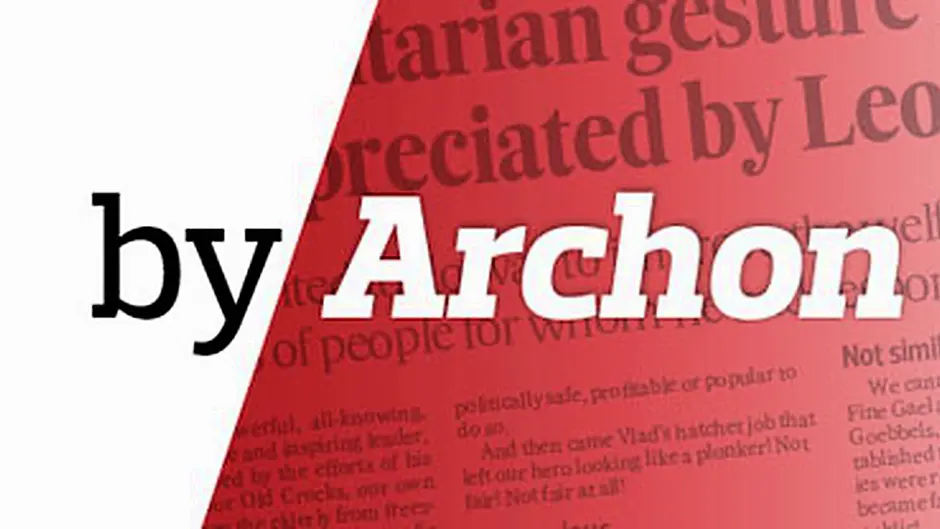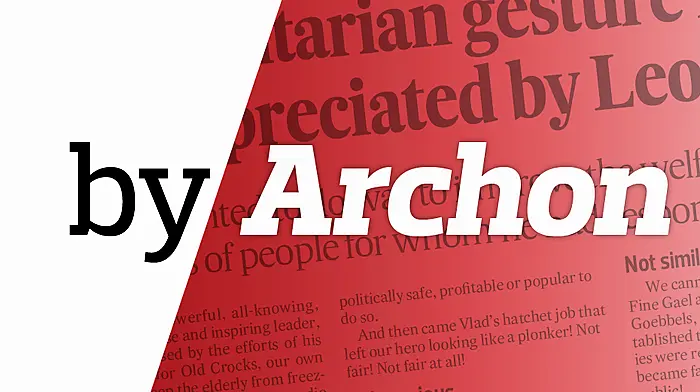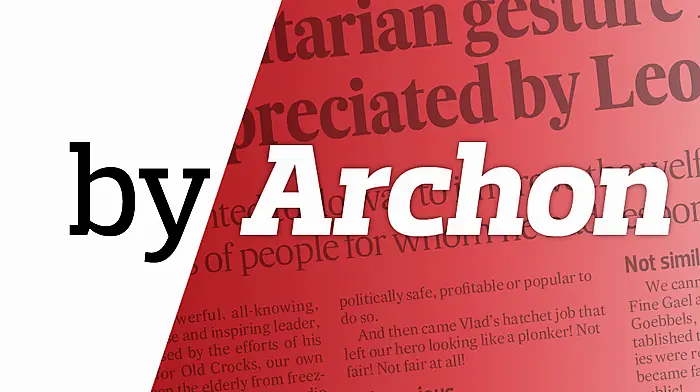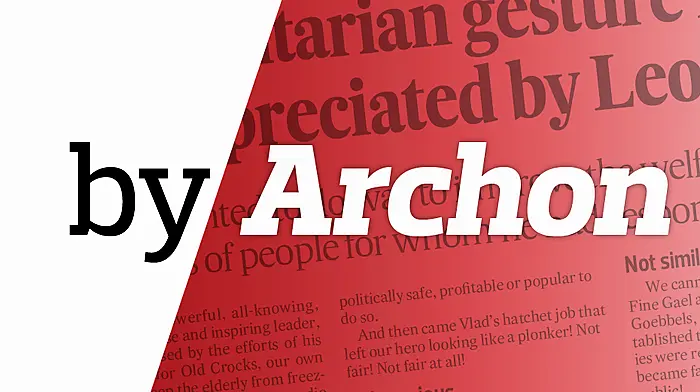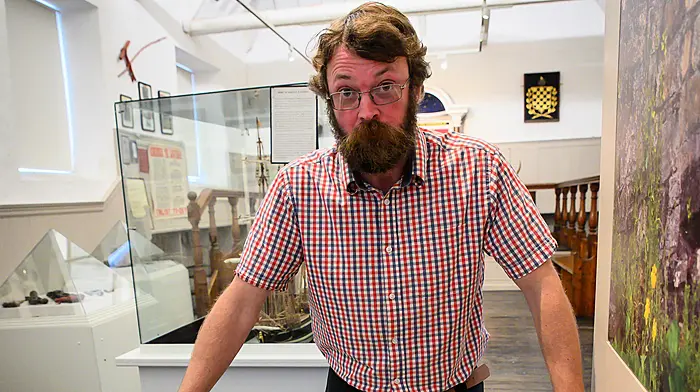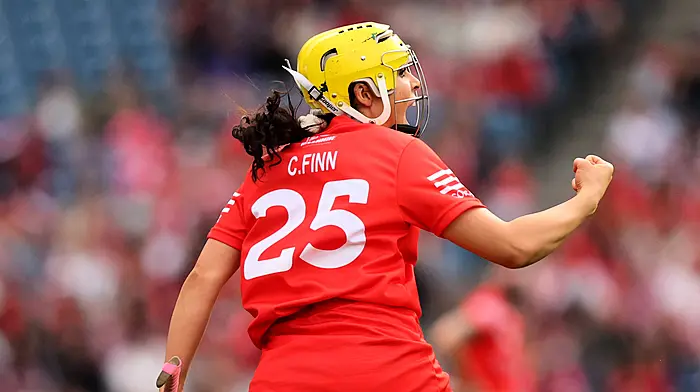AS a people, we’ve never really been into erecting statues to public figures, preferring to blow them up (the statues, that is) – which is understandable within the context of having been a colonised people, reluctant to doff the hat to the oppressor.
Leaving aside religious statues and, no, we’re not referring to the famous moving one at Ballinspittle which still attracts crowds – albeit somewhat smaller than in the days when UCC explained the statue’s mobility as ‘a concatenation of historical, cultural, political, religious and sociological factors’ – the fact is that public monuments tend to bring a whiff of controversy, especially those inherited from the Brits, which were a class apart.
The equestrian statue in honour of George II, erected on July 7th, 1762 on Cork city’s Grand Parade was a case in point. Designed to reinforce socio-political divisions in the city and to promote the dominance and power of the coloniser, an inscription on the base of the statue expressed the immense gratitude of Leesiders for the many blessings enjoyed ‘during the auspicious reign’ of their much loved king. Talk about plámás!
Constructed at a knock-down price, the statue began to disintegrate almost immediately and it wasn’t long before a wooden support was necessary for the horse’s belly and the right arm of His Royal Highness.
Nationalist Cork, which saw in King George’s sorry state a metaphor for British rule in Ireland, took a certain pleasure in watching the monarch self-destruct, until eventually, late-night carousers toppled the thing into the gutter. It was never repaired or replaced.
And let’s not forget the Fr Matthew statue (commonly known as ‘de statue’) on Cork’s St Patrick’s Street. Erected in honour of his crusade against the ‘demon drink’, it has become a challenge for intoxicated people on a Saturday night to risk life and limb trying to place a traffic cone on the eminent reformer’s head!
Russia’s monuments
As for the practice of bombing statues, well known cases include Dublin’s Nelson’s Pillar, and King William of Orange. Both met an inglorious end thanks to the judicious placement of a charge of dynamite.
A statue of Queen Victoria stood outside Leinster House until (wisely) it was removed and relocated on the grounds of the Royal Hospital at Kilmainham. Still not safe, its nomadic life ended when the Irish government gifted the Famine Queen to Sydney in Australia in 1986, thus permitting her a new lease of life, rather than being the target of a ‘military attack.’
Under British rule, public statuary commemorated the lives of big shots (Nelson, Wellington) and to convey a particular version of history. In post-colonial times, statues honouring the aggressor were removed and a different set of symbols, those of a republic, represented the aspirations of an altered political system.
As a republic, public statues focussed the eye on an ideology that was largely Catholic. Nevertheless some of the Imperial-era statues survived, although their symbolic importance no longer was relevant.
Interestingly, the response in Russia to redundant statues has been different. In St Petersburg, for instance, when the ideology of the Communist Party disintegrated, statues relating to the Soviet era were removed from their prominent locations and relocated in a large city park.
Their removal was the result of a political decision and because circumstances had significantly changed. Certain people – mostly politicos – who had been honoured in the past by a statue or bust no longer had relevance in the ‘new’ Russia, but, importantly, the Russians did not destroy their statues. And, in that sense, history was not erased.
Fatwa on Winston!
On the other hand, Britain currently is responding to unpopular statuary by imposing a sort of fatwa. Political groups want the effigies of Winston Churchill in Parliament Square, London, and that of Baden-Powell (founder of the Boy Scout movement), to be removed and hidden from sight.
The reason? As historical figures, they were linked to slavery and racism.
The word ‘racist’ was painted on Churchill’s statue, which prompted the Mayor of London to comment that British society had ‘lost its compass.’ The leader of the House of Commons, Jacob Rees-Mogg, suggested that those wanting to destroy Churchill’s monument were on a par with protesters seeking to knock down Stonehenge in the belief that it might have been the site of human sacrifice!
Momentum also is increasing for the removal of a statue of Cecil Rhodes, the 19th century billionaire and politician who owned much of Rhodesia and who supported apartheid practices in southern Africa.
Likely to get the chop too is Robert Peel, founder of the British police force, and Robert Clive, otherwise remembered as Clive of India whose policies killed around 10 million people. Another is a chap called Redvers Buller who, during the Boer War, developed the idea of concentration camps. He’s now persona non grata, as is Thomas Guy, founder of Guy’s Hospital in London who made his pile selling slaves to the Spanish colonies.
All of which prompted London’s mayor, Sadiq Khan, to announce a review of statues to see if they represented people with a racist history or who had been engaged in the slave trade. In simple terms, it’s a purge, British style (when the guilty parties are long dead!)
Drake honoured
What’s interesting from an Irish perspective is the fact that, just as the politically respectable Mickey Martin began clawing his way into government, the Brits dumped their onetime hero, Sir Francis Drake, into the list of nasty people. Mickey, you see, was involved in a controversy concerning a monument to Sir Francis Drake, thief, mass murderer and pirate, which was erected a few years ago outside Carrigaline.
Invited to unveil a monument that bizarrely commemorated Drake’s accidental visit to a waterway in Cork Harbour, Mickey declared his delight at being asked to do the honours. Indeed, the occasion was made even more memorable by the presence of a special guard of honour that consisted of Haulbowline Matelots in shiny uniforms .
But, sadly, neither Mickey, his back-up team of advisers nor the Irish Navy knew much about Francis Drake and they kinda overlooked his participation in the enslavement of 1,400 Africans between 1562 and 1567.
They certainly seemed to know nothing about Drake’s massacre of Rathlin Island’s entire population – which made the sight of a senior FF minister honouring the memory of a mass murderer somewhat incongruous!
Within a few days, locals painted a phrase in Irish on the monument, which translated meant: ‘We’re not all English toadies!’

